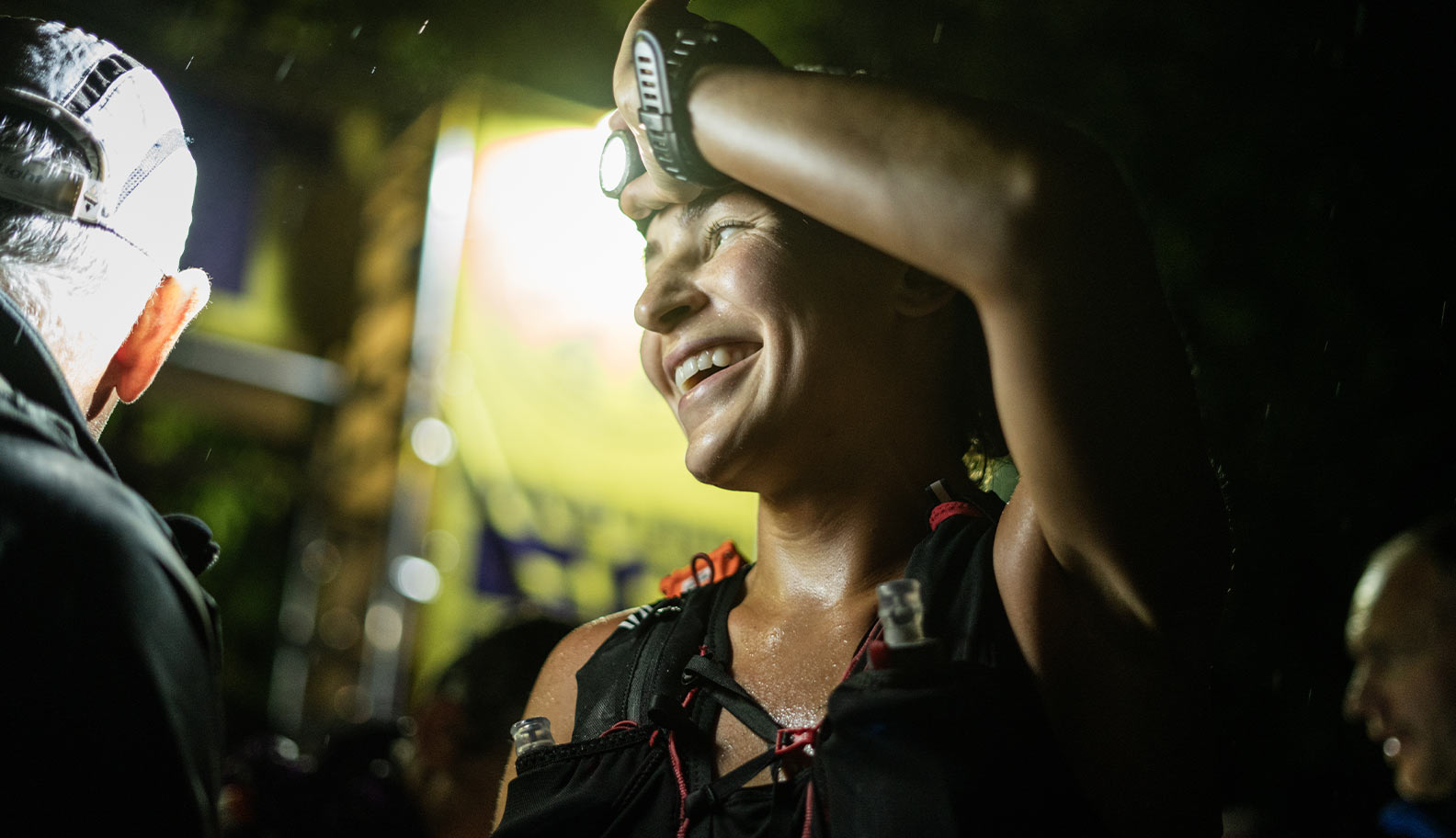We’re proud to work with many of the world’s toughest races, including the legendary Lakeland 50 & 100. This epic ultra based on our doorstep in the Lake District attracts thousands of racers each year. It’s a great option for both experienced trail runners and those just getting started on their ultra-running journey.
For more experienced runners eager to take things to the next level this year, we’ve teamed up with Lakes-based ultra running coach Howard Dracup, to bring you a 3-part training programme designed specifically for the Lakeland 50. Split into 3 key training blocks, using Howard's training, we aim to get you to the start line at Dalemain feeling fit, healthy, and mentally ready to push your performance on this iconic ultra challenge.
NB: This plan is not for complete beginners. By beginner, we mean someone who has had a long break from running, or has just started from scratch and hasn't already got a base of around 4-5+ hours per week. If you aren't already running at this level, or have never done any kind of intensity sessions, we recommend building up a base first, taking it nice and easy. You could add in some fartlek sessions over these next 6 weeks too and hopefully you can join us for the Lactate Threshold block later! There's also plenty of scope to adapt this training plan, so don't be too scared by it. You just need to listen to your body and adapt the plan accordingly.

Ready to train? Let’s get started…
Introducing your training coach
I’ve been a running coach for around 4 years now and run a coaching business with my partner called Mountain Strong Coaching, based in Cumbria. I’m a level 3 personal trainer, a UK athletics fell/mountain running leader, a running fitness coach (LIRF & CIRF), and a UESCA ultramarathon coach.
Since I started running over 9 years ago, I've taken part in some pretty big races in the UK and worldwide. Most recently The Swiss Peaks 360 km, as well as many others, including the Cape Wrath Ultra, Vietnam Mountain Marathon 100 km, Spine Race Challengers, and Scafell Skyrace (to name just a few!).
Over the years I’ve picked up some great race and running experience, as well as coaching qualifications. All of this experience has helped me prepare people to train and participate in running events, so they can achieve their own running goals. I’m looking forward to helping you do the same on the Lakeland 50!
Why training is essential for a 50-mile ultra
A 50-mile ultra like the Lakeland 50 is not a race you can just rock up to and hope for the best. That said, if you are looking for a great day out and just want to walk the route, the Lakeland is a great option and won't require the same level of training as those looking to run most of the route.
To finish the race in one piece, your training is going to need to be consistent, specific and well-structured. The main difficulty of the Lakeland 50 is not just the distance. It’s the 10,000 ft of ascent and descent that you’ll tackle along the way. The trails are technical in places and depending on the weather, the rocks and ground can be muddy and slippery too. So you need to prepare the body physically and mentally, so that come race day, you’re ready for the run and you feel like you're equipped with the physical and mental tools to finish with a big smile on your face! The more prepared and the better you train, will also determine how well you recover afterward. It will also help to prevent any mid-race injuries.
There are many ways to coach and create training plans for ultra runners. Many, if not most of you, will probably be more familiar with “classic periodization”. This is where several fitness workloads are developed all at the same time, so as the volume grows, you also continue to increase the intensity. In a single week, you may do a classic mix of all sorts of training, from tempos to max effort intervals, to threshold workouts, long runs, and then some rest days.
There is nothing wrong with this approach but, for ultra runners and endurance athletes, I personally prefer to use a modified “block periodization” model. This is because, with classic periodization, I feel like there are too many different intensity levels being used simultaneously, which can sometimes negatively impact the training response you're looking for.
Instead, using the modified block periodization model I will split your training into 3 very specific blocks where we will be focusing on only one particular training adaptation at a time. The blocks are in a particular order too. Ultimately, as ultra runners, the goal is to increase the speed of your easy run pace, or the average pace in which we intend to run the event.

Overview of Block Training
-
Block 1, 6 weeks: Higher VO2 max = Higher lactate threshold.
-
Block 2, 8 weeks: Higher lactate threshold = Higher aerobic threshold.
-
Block 3, 8 weeks: Higher aerobic threshold = Faster easy run pace.
-
Taper, 2 weeks: Recover ready to race.
Block 1
In the first of the training blocks (which covers 6 weeks), we will be working on your VO2 max. VO2 max is the maximal amount of oxygen that your body (heart, lungs and muscles) can effectively use during intense exercise. It can be used as a way of measuring a person's individual aerobic capacity.
To do this, we will be using short, sharp and high-intensity “hill intervals”. This is because, the higher our VO2 max is, the higher our lactate threshold will be. So when we go into the lactate threshold block (which just so happens to be the second block) you will then be working at/or around a new, higher lactate threshold than what you previously had. During block 1 the volume will be low, due to the high intensity of the intervals.

Block 2
After block 1, we will then go into block 2, covering lactate threshold training over 8 weeks. In this block, there will be “threshold intervals”. These intervals will be intense, but not as intense as the hill intervals in the VO2 max block. Because of this, we can now start to grow the volume a little bit more.
Working at this intensity for 8 weeks will get you super fit. As ultra runners this is where we get most bang for buck with training. It’s the imaginary line between running aerobically (easy) and anaerobically (hard), and over time, it will make us become more efficient, in turn increasing the speed of our easy run pace! When we start to run harder, lactate is produced and accumulates in the blood faster than the rate at which it is being used, which leads to fatigue.
Threshold training is a way to improve the amount of lactate that your body can process and utilise for energy. It's the sweet spot at which lactate is produced, then shuttled away. Over time, it is trainable, so you can run harder and deal with higher amounts of lactate production.
Block 3
By the time we get into block 3, the endurance block (also covering 8 weeks, you will now have a slightly faster, easy run pace. This block aims to develop this by using “steady state intervals”. In comparison to the intervals in blocks 1 and 2, these are fairly mild, but they are still lots of fun as they allow us to prescribe some intensity and to increase the volume of your runs.
Once this block is complete, we finish with a 2-week taper, where we will reduce the training load and add in some extra rest days here and there, to help you freshen up for race day.
Block 1 unpacked: VO2 Max
So let's talk more about the first block, the VO2 max block. It consists of x2, 3-week blocks. 2 weeks of hard work, then an easier week. Due to the VO2 max blocks being very intense, I’ve made them 3 weeks long so we don't end up being injured or fatigued. The sole purpose of this block is to raise your VO2 max and nothing else.
Here's the deal… most ultras are run at relatively low intensities and this correlates to how most ultra runners train (at low to mid-level intensities). This means that a lot of ultra runners don't have high aerobic capacities (or a high VO2 max). That’s because they train “too much” at low to mid-level intensities, so they often have a highly developed fitness from their base to their lactate threshold.
The problem with this is that a runner's VO2 max represents the highest point of their aerobic capacity, it's basically like the ceiling on the roof. So if a runner's VO2 max is low but their lactate threshold is high, the limiter on their performance, from an intensity standpoint is the VO2 max. That’s because one's lactate threshold cannot exceed their VO2 max.
A more simple analogy could be to imagine VO2 max being a glass and lactate threshold the water. The bigger the glass (VO2 max) the more water you can fit in the glass (lactate threshold). So having a short block of VO2 max work just before the lactate threshold block (block 2) is going to allow you to have a higher lactate threshold than what you had previously, had we not done one!
A breakdown of the VO2 max block can be found here. Included within this is a week-by-week training structure, as well as workout descriptions to help explain the level of intensity and effort you should be working towards.. In all the sessions we will be using and working towards “RPE” which stands for rate of perceived effort.
Further Training Guidance
Generic plans are quite hard to make as they are often followed by runners of mixed abilities. So to help with this I have put times ranging from 30-60 minutes on the recovery runs. If you feel tired after the workouts, I’d suggest opting for a shorter recovery run or maybe even an extra rest day if you're super tired and not used to the intensity. If you're finding the plan suits your ability well then you can go with the longer run times.
In this block I wouldn’t recommend going over on the time as there will be plenty of time to do more volume in the threshold and endurance blocks. Also, remember to thoroughly warm up before your runs and cool down at the end, especially the hill intervals. Another important pre-workout ritual is to do strides before you go into the main session (Hill Interval days). If you're not sure what strides are, they’re an exaggeration of your form, they last for 20 seconds in total, with 1mins 40 easy running in-between.
The 20-second part should be a pick-up in speed from an easy run to around about 80-90% of your max effort, so its not an all-out sprint. This part should take you from 0-15 seconds gradually increasing until you get to 80-90% of max speed, then held for 5 seconds. They’re great for warming up.
You can also play around with the interval times on the sessions if you find 30 seconds is too easy. As a rule of thumb, the work-to-rest ratio is 1:1 so if you increase to 2 mins for example, then you should take a 2 min recovery period. This also applies if you want to reduce the intervals. You’ll probably find that you will adapt to this stimulus quickly, so once you start feeling like you can do more, you can increase the interval durations in 15-second increments.

The hill at which you perform your intervals needs to be smooth and runnable so that you can keep up a hard effort without rolling an ankle or slipping and sliding. I’d recommend a hill anywhere between 2-10% gradient. I love doing mine on the treadmill, I pause the treadmill and totally rest in between my sets and then unpause it and get it back up to speed before the next rep is due. The aim of the game is to go as fast as you can and be just about recovered enough to go again and complete all the sets. You’ll probably find there's not enough time to fully recover, but that’s how we raise your VO2 max!
As for your strength and core sessions, I’ve put them on the same days as your harder runs, so that the recovery days are kept easy. If this doesn’t fit your schedule, I’d fit them in whenever you can, but try to leave some time in between the strength/core sessions and the run if you can, especially the strength workout, for example run in the morning and workout in the afternoon.
With regards to weight I'd recommend starting off doing the exercises with bodyweight, especially if you don't normally do strength work. As you progress, add some weight in there and slowly build it up over time to make it challenging for the set amount of reps. It’s important that you gradually increase over time because if you don't you’ll get what’s called DOMS (delayed onset muscle soreness).
I’d expect a little bit of doms for the first few sessions but this should improve as your body gets used to the training and adapts. The aim of the game is to not cause too much doms, so remember not to load the first few sessions until you know how your muscles are going to feel the day after. Remember, the strength work is meant to complement your running, not set you back.

We'll drop the next training block shortly, so keep your eyes peeled for part 2!
To download the second block of the 24 Week training guide, follow the link to our blog here.
















